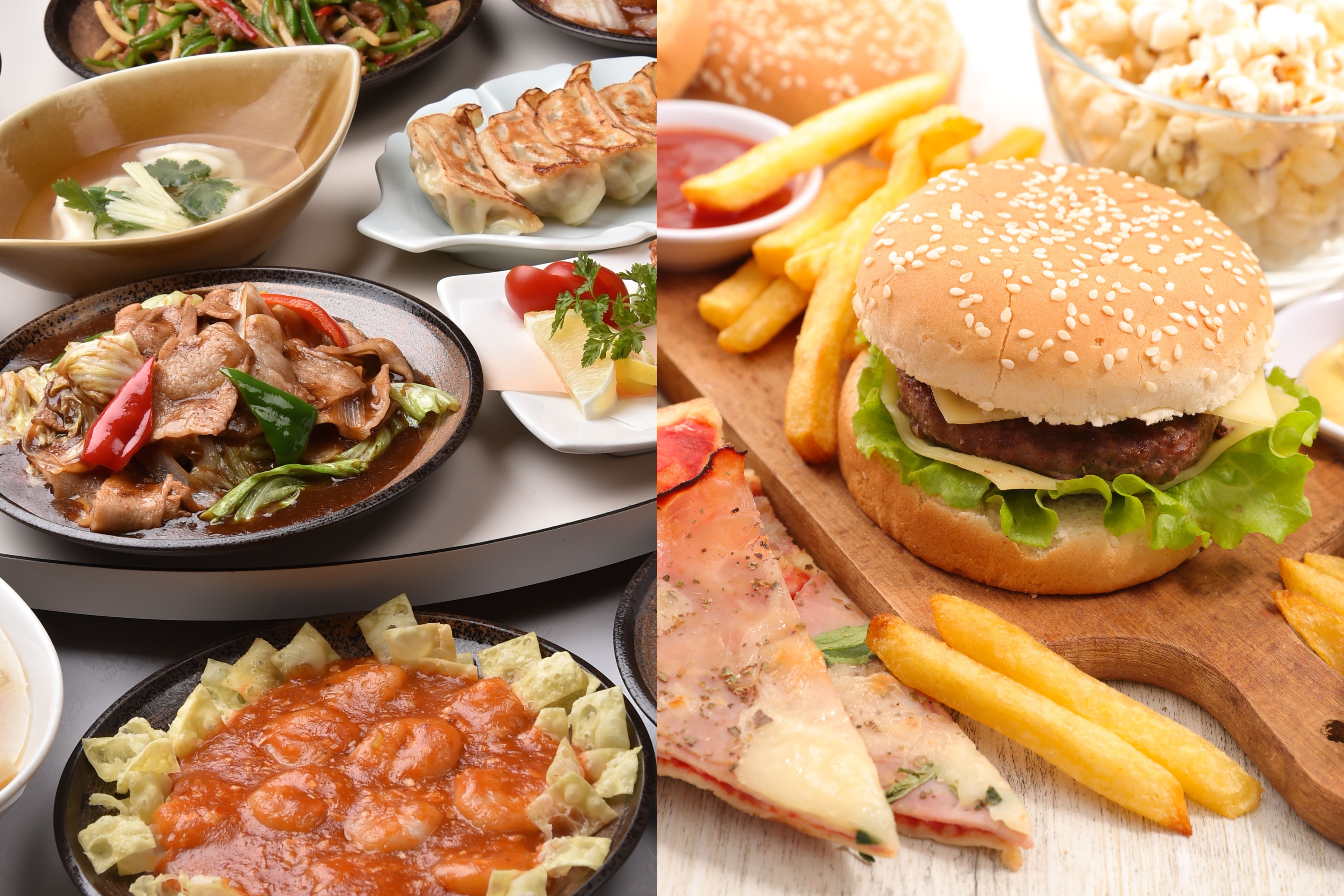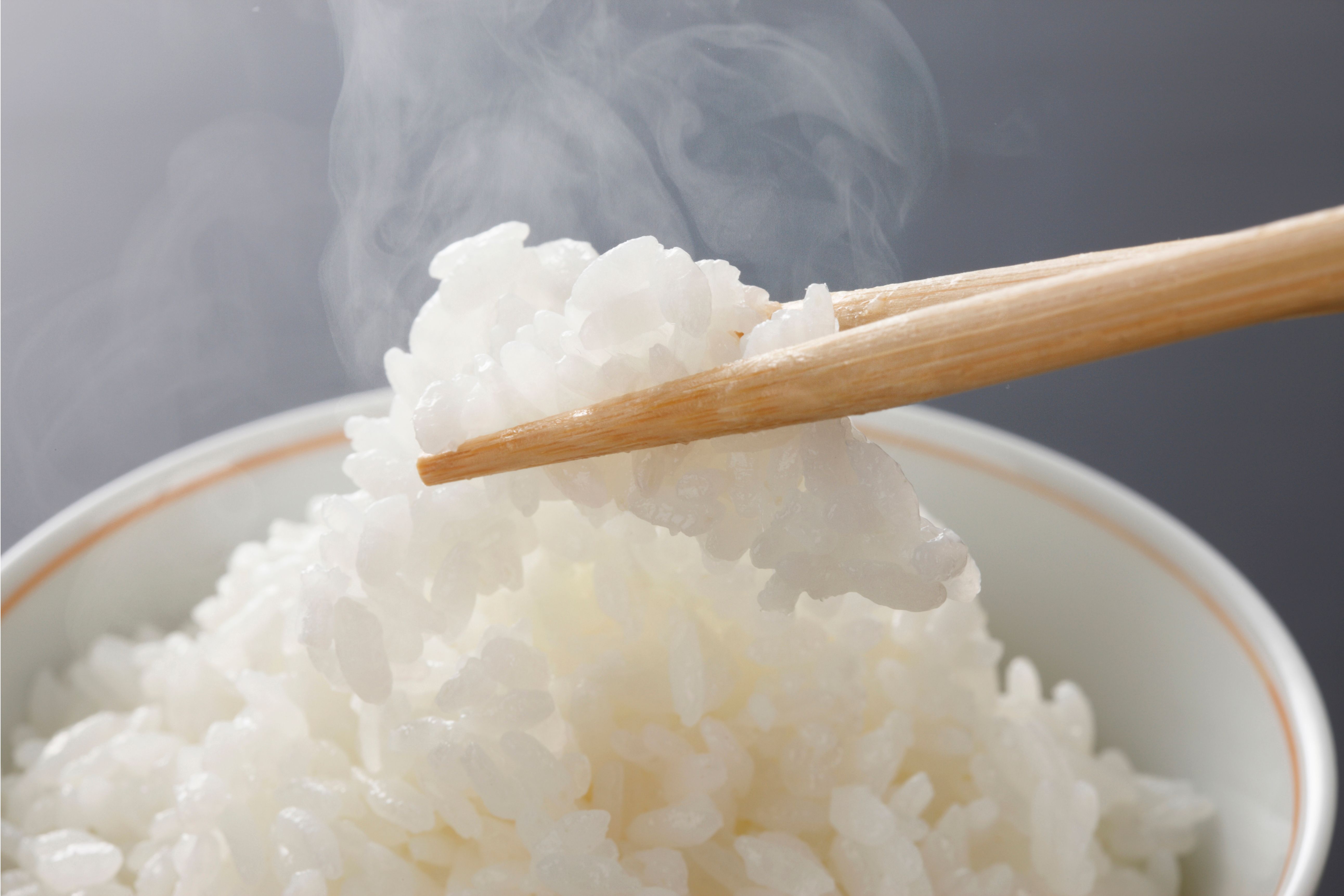Chinese and Western foods represent two distinct culinary traditions. Both beloved around the world, the two food cultures have different ways of eating, cooking and serving. You most likely have tried Chinese food in your home country and noticed how it stands out from the meals you have at home. Here we explore the fascinating differences between Chinese and Western food cultures.

1. Flavoring
The flavors in Chinese and western foods are pretty different. Chinese dishes tend to use a wide variety of spices and seasonings like soy sauce, rice wine, garlic, ginger, green onion, and chili pepper. These spices create complex, bold and flavorful dishes. On the other hand, western dishes often bring out the natural taste of the main ingredients and are more mild and savory. That said, western dishes do use a lot of processed sauces – think tomato sauce, mustard, mayonnaise and barbecue sauce… those are just a few of the staples you’ll often find.
2. Cooking Methods
The way food is cooked is another big difference between Chinese and Western cuisine. Chinese cooking usually focuses on speed and high heat—stir-frying, steaming and quick sauteing are super common. You’ll rarely find an oven in a traditional Chinese kitchen. In contrast, Western cooking often relies on grilling, roasting or baking. It can take more time and sometimes requires specialized equipment.
Vegetables are treated pretty differently, too. In western meals, salads are a go-to, and raw veggies are totally normal. But in Chinese cuisine, vegetables are almost never eaten raw – they are usually cooked thoroughly before being served. In fact, most Chinese dishes are served hot and cooked. Even cold appetizers are typically cooked first and then cooled down before serving.
3. Presentation
In Chinese cooking, meats and vegetables are often pre-cut into small, bite-sized pieces before cooking. That way, everything’s easy to grab with chopsticks – no need for knives or cutting things up at the table. Another thing that stands out is how meat is often left on the bone, even with fish. In Western meals, fish is usually served filleted and boneless. But in Chinese cuisine, it’s totally normal to serve the whole fish with bones. Picking out fish bones while you eat is just part of the dining experience.
4. For the Table
Another big difference between Chinese and Western dining is how food is served. In Western culture, meals are usually pretty individual. At restaurants, everyone orders their own dish. Food is served to each person on a large, personal plate, often at a long, rectangular table. You mostly chat with the people sitting right next to you. In contrast, Chinese dining is all about sharing. Meals are enjoyed at round tables, with lots of dishes placed in the middle for everyone to enjoy together. Each person has a small plate and helps themselves from the shared dishes. The round table setup makes it easy to see and talk to everyone, and makes people feel they are part of a cohesive group. This reflects the value placed on community and harmony in Chinese culture. Another fun part of Chinese dining is the variety – you get to sample a wide range of dishes instead of just sticking to one. Also a part of Chinese food culture, of course, is fighting over who pays the bill. It’s a playful but meaningful gesture that shows generosity and helps strengthen social bonds.
5. Utensils
In the West, dining usually means eating with a plate, fork, spoon and a knife for cutting meat. In China, meals are typically eaten with chopsticks and a bowl. A handy tip if you are new to chopsticks: don’t be shy about lifting the bowl closer to your mouth. That way, you won’t need to worry about food falling off your chopsticks. For more about chopsticks check out our short history and guide via the following link: Chopsticks: A Short History and Guide
6. Drinks and Desserts
Drinking customs in China and the West can feel pretty different. In China, it’s common to be served warm tea as soon as you sit down at a restaurant – it reflects the general preference for warm drinks. Along with tea, people also like to order beer or the famously strong Chinese white liquor, baijiu. In contrast, Western meals usually lean toward cold alcoholic drinks like wine, beer or cocktails. Notably, coffee is becoming increasingly popular in China in recent years, especially among the younger generations.
When it comes to dessert, the contrast is just as clear. In the West, sweet and indulgent final courses like ice cream and cake are popular. Traditional Chinese meals, on the other hand, often wrap up with fresh fruits. Fruits are not only refreshing but also thought to cleanse the pallet and aid digestion after a meal. In high end restaurants, this practice is elevated into an art form. An assortment of fruits are assembled meticulously into beautiful, elaborate patterns served on a large platter.
Food has always been about more than just eating – it’s about family, tradition and community. In both Chinese and Western cultures, food brings people together, serving as a means of bonding, sharing and celebration. As the world becomes more interconnected, Chinese and western cuisines are mixing in exciting ways. Fusion dishes blend elements from both cuisines to create something totally new. The future of food looks deliciously bright, with endless possibilities for combining ingredients and traditions from around the globe.
If you are interested in teaching English in China and tasting the most authentic Chinese cuisine, we’ll support you in your endeavor, feel free to get in touch at [email protected].







